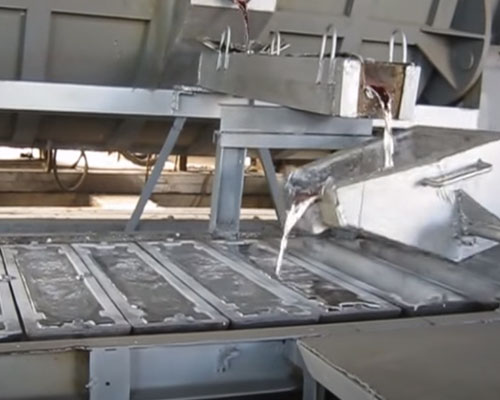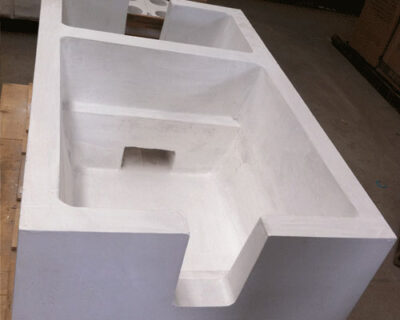The Filtration System is widely used in aluminum water filtration of aluminum casting process. It can prevent particulate impurities in the aluminum liquid from entering the slab, and improve the quality of aluminum processed products. A filter plate is installed in the filter box, which can effectively filter out large inclusions, absorb small inclusions in the aluminum liquid. Refine the crystal structure of castings. Reduce the hydrogen content in the molten aluminum. Remove the harmful elements Na and K in the aluminum liquid by adsorption. Foam ceramic filter plates are currently effective tools for removing oxidized inclusions in the melt.
Filtration System
The foam ceramic filter plate is installed in the Filtration Box between the furnace mouth and the diverter plate. The CFF filter box is made of refractory material. It can withstand multiple cold and hot shocks without cracking. It also has the advantages of high strength and good insulation performance. The closer the filter box is to the diverter plate, the better. Because it can shorten the flow distance of the aluminum liquid and reduce the regeneration of oxides. The aluminum liquid flows out from the furnace mouth through the filter box, and then flows into the distribution plate through the flow groove.

When the filter device starts, the difference of level before and after the melt filtration is about 50 mm. However, with the extension of the filtration time, the inclusions on the surface of the filter plate, and the pore wall increase, the filtration flow rate decreases, and the difference of level increases. By the end of casting, the drop has increased to 60-120 mm. The selection of the filter plate depends on the flow of aluminum liquid.
Secondly, the cleanliness of the melt, the content of inclusions, and the total throughput of the melt should be considered. When designing the filter device, the filter box should be selected according to the specifications of the selected filter plate, and the drop of the furnace mouth and the shunt plate should be taken into consideration. In addition, it should be considered that the installation and disassembly are very safe and convenient. After the melt casting is completed, the aluminum liquid in the filter box can be completely drained.
The practice has proved that the foam ceramic filter plate is an effective tool for removing oxidized inclusions in the melt. The general fiber filtration can only remove large inclusions, and the foam ceramic filtration system can filter out large inclusions and fine inclusions at the same time.

The foam ceramic filter plate has a multi-layer network and multi-dimensional through holes, and the holes communicate with each other. When filtering, the aluminum liquid carries the inclusions along the tortuous channels and pores. And the inclusions are directly intercepted, adsorbed, and deposited when liquid aluminum contacts the foamed skeleton of the filter plate. When the melt flows in the hole, the filter plate channel is curved. And the melt flowing through the channel changes the flow direction, and the inclusions collide with the hole wall anvil and firmly adhere to the hole wall.
The size and porosity can ensure the effect of the filter plate. The larger the porosity of the filter plate, the worse the slag removal effect. For aluminum castings with strict requirements, the filter plate with small porosity should be selected.


776804 220382I love your wp format, where did you get a hold of it? 533843
Pingback:Homepage